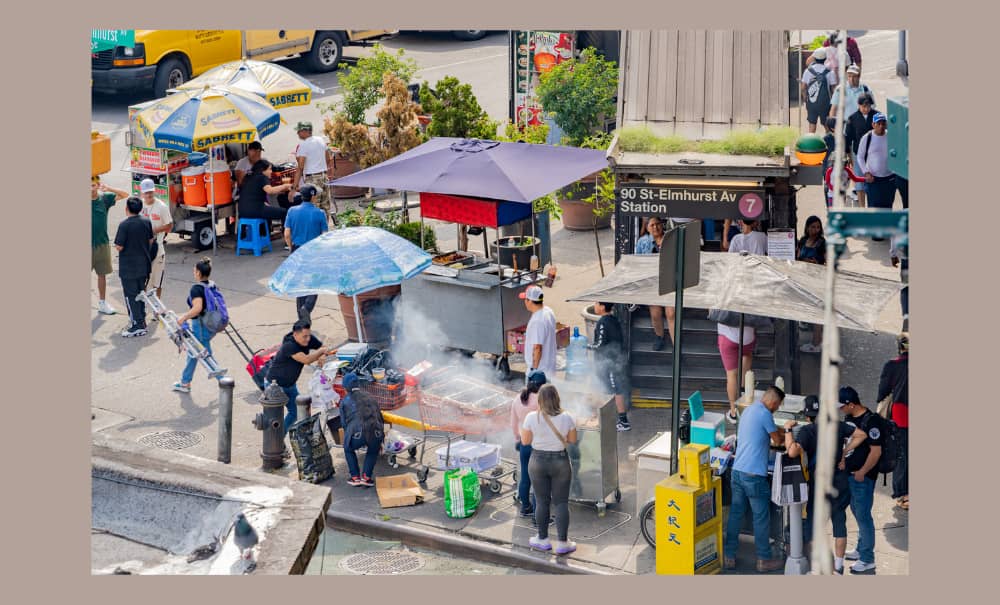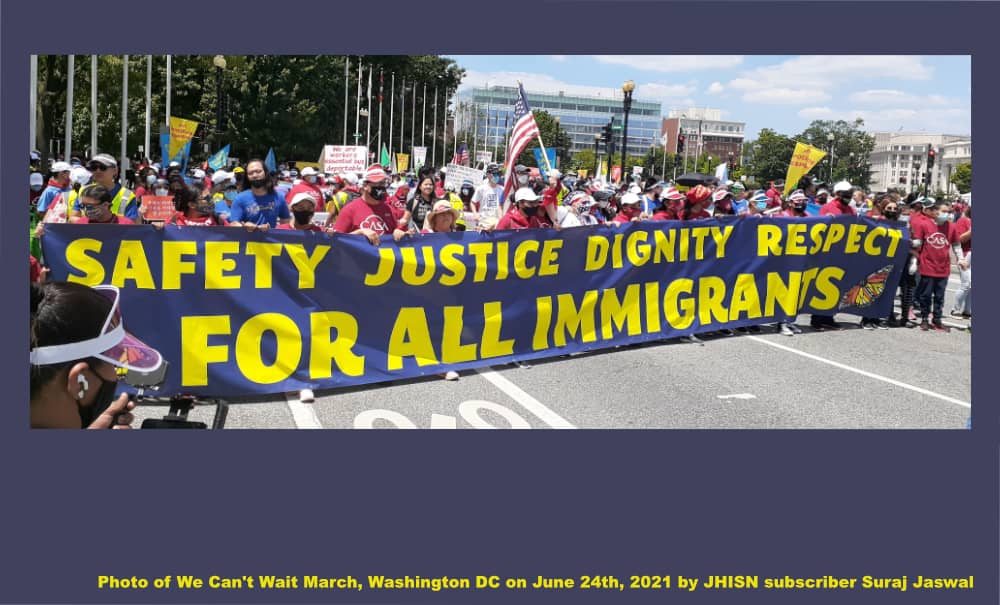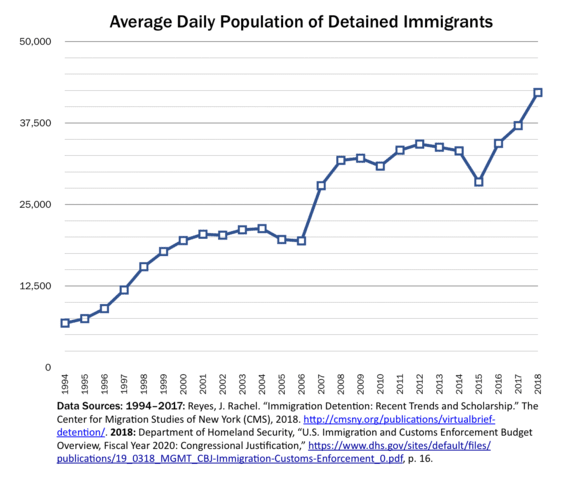
Dear friends,
We write as the violence in Palestine continues and intensifies, with Israel this week launching a new, ferocious attack on the West Bank and in particular the Jenin refugee camp. It is easy in the US to forget that the 1948 founding of the state of Israel took place by turning hundreds of thousands of Palestinians into refugees; Palestinians, however, do not forget. Our newsletter offers a brief report on immigrant justice groups’ recent solidarity work with Palestinians under the US-backed genocidal siege, while looking more broadly at the kinds of political action and expression available to different kinds of non-profits. We also update you on the ongoing fight for economic and legal rights for New York City’s street vendors, who are largely immigrant workers.
Newsletter highlights:
- Rally for Street Vendor Reform Platform
- Make the Road Action: the difference non-profit status can make
1. For NYC Street Vendors, the Struggle Continues
“I’m a street vendor in Queens, New York … I sell Mexican food. We’re here to demand that the City Council pass a reform of the street vending rules. We’re tired of being criminalized… We’re thousands of parents, many of them single mothers who don’t have other sources of income for their families than working in the streets… We’re working people who want to be part of the economy of this country.” –Cleotilde Juarez, Democracy Now (August 24, 2024)
Over 600 street vendors marched from Union Square to City Hall on August 15, calling for passage of the Street Vendor Reform Platform, a set of four new bills making its way through the City Council. Part of a years-long struggle for the decriminalization of street vending, and for economic opportunity and protection for vendors, the rally emphasized that vendors are desperate for a legal landscape that is predictable and fair. Of the nearly 20,000 vendors in our city, the vast majority are immigrants, people of color, women and veterans.
Currently, more than 9,800 New Yorkers are on the city’s waitlist—which is now closed to new applicants—for mobile food vending permits, with over 10,900 people waiting for licenses for general vending. Guadalupe Sosa, a vendor and rally participant, said she has been waiting a quarter-century for a permit for her family’s snow cone business, started by her mom over 20 years ago. The inefficient waitlist ‘system’ forces unlicensed street vendors to work in a precarious shadow economy where they are subject to harassment and $1000 city fines.
The Street Vendor Reform Platform, if passed through the City Council, would ensure vendors increased access to legal permits; reduce criminalization of vending; and create a new division of Street Vendor Assistance within the city’s Department of Small Business Services. The NYC Independent Budget Office reports that passage of the Reform Platform could earn the city $17 million in new revenue.
But instead of supporting just reform of the city’s vendor policies, Mayor Adams has played games with hard-working people’s lives. In May 2022, the Mayor publicly embraced a set of reform recommendations made by the Street Vendor Advisory Board (see newsletter 07-09-22). But by Summer 2023, Adams had transferred enforcement of vendor regulations from the Department of Consumer and Worker Protection to the Department of Sanitation—aided by the NYPD. He denounced our own vibrant Corona Plaza vendor market as “dangerous,” and within days the Sanitation Department police targeted the Plaza, ransacking vendor goods and confiscating carts, handing out $1000 tickets and shutting down more than 80 local vendors (see newsletter 08-26-23).
The City Council’s bundled Street Vendor Reform Platform would begin to address the dysfunction and sanctioned violence of the city’s current vending regulations. As local Councilmember Shekar Krishnan states: “Street vendors provide a lifeline for many immigrant New Yorkers. They are our smallest businesses …. No vendor should face jail time and a criminal conviction for trying to feed their families.”
WHAT CAN WE DO?
- Give NYC street vendors your business!
- Sign the NYC Street Vendor Reform petition supporting the Reform Platform.
- Become a member, donate, or volunteer with the immigrant-led Street Vendor Project.
2. Political Action: Using All the Levers
The immigrant justice groups in our neighborhood don’t hold back when it comes to responding to pressing political issues. One recent example is their expressions and acts of solidarity with Palestinians in Gaza. On July 25, during Israeli Prime Minister Netanyahu’s visit to the US, Desis Rising Up and Moving (DRUM) demanded his arrest as a war criminal and called for a permanent ceasefire and arms embargo. Damayan has joined protests against genocide in Palestine. Chhaya has called for “peace in the region, the return of Israeli hostages, an immediate ceasefire, and the flow of humanitarian aid to Gaza.”
In a related initiative, Astoria Assembly member Zohran Mamdani and Senator Jabari Brisport are advancing Palestine solidarity legislation originally sponsored by the Adalah Justice Project and supported by DRUM and many other progressive organizations. Called “Not On Our Dime!,” the legislation would forbid New York State nonprofits from “aiding or abetting activity in support of illegal Israeli settlements in violation of the Geneva Conventions of 1949 or illegal pursuant to the Rome Statute of the International Criminal Court.”
Most local grassroots immigrant justice groups are registered as 501(c)(3) non-profits. This status has lots of benefits, including the ability to accept tax-deductible donations, access grants and government programs, tax-free purchases and indemnification from personal liability. But there is a significant limitation: 501(c)(3)s are not allowed to take sides in political elections.
Make the Road New York (MRNY) is one of our local 501(c)(3) nonprofits, and in that role has been similarly outspoken on a range of political struggles that they see as sibling struggles for “respect and dignity,” including the Palestinian freedom struggle. But Make the Road has also evolved into a national organization, with affiliates in Connecticut, Nevada, New Jersey, and Pennsylvania. In 2009, its members decided to find ways to participate in electoral campaigns, including national elections. The vehicle they gradually developed for this work is Make the Road Action (MRA).
MRA was organized in partnership with the Center for Popular Democracy, a group dedicated to “building organizational infrastructure” for progressive groups. MRA is a different kind of non-profit: a 501(c)(4). Ironically, this type of group became popular after the Supreme Court’s reactionary 2010 Citizens United decision, specifically because it allowed corporations (including certain non-profits) to directly endorse candidates.
501(c)(4) non-profits aren’t supposed to coordinate formally with campaign organizations, but they can accept funds from most sources, including political action committees and foundations, for their own initiatives to support candidates. MRA started slowly: as late as 2017, its tax return listed donations of $347,149, and a net loss of -$359,321. But by 2022, MRA reported revenue of almost six million dollars, mostly from gifts and grants.
In 2020, MRA supported Bernie Sanders in the Democratic primary. This summer, they backed Jamaal Bowman’s unsuccessful Congressional re-election campaign. And then on August 15, the non-profit announced its endorsement of Kamala Harris for President—its first endorsement in a presidential race. That decision was ratified by large assemblies of hundreds of activists. According to The Guardian, the assemblies discussed “issues including housing affordability, the climate crisis and the US government’s role in Israel’s war on Gaza. But immigration rights were the main focus of deliberations.”
MRA’s financial resources will be barely a drop in the bucket for an election contest that is burning through hundreds of millions of dollars. But Make the Road is known for its prowess in grassroots organizing, especially in working class Latin American immigrant communities. MRA activists have a plan: to knock on a million doors in support of the Harris-Walz ticket, mostly in the crucial swing states of Pennsylvania and Nevada. They have already started.
“Our members are excited. Harris is a woman of color, and a person who comes from an immigrant family. So they see their children or themselves in this candidate. They feel that she is someone who at least understands where we are coming from….We talked about this deeply, because the Biden administration, and by extension, Kamala Harris as Biden’s vice-president, have not been perfect on immigration. When we’re doing endorsements, we’re not picking a savior. We’re picking someone we think we can move and push to the right direction.” —Theo Oshiro, MRNY
WHAT CAN WE DO?
In solidarity and with collective care,
Jackson Heights Immigrant Solidarity Network (JHISN)
Follow @JHSolidarity on Facebook and Twitter and share this newsletter with friends, families, neighbors, networks, and colleagues so they can subscribe and receive news from JHISN.

